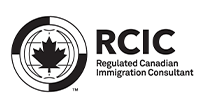Saskatchewan Returns SINP Applications Due to Sector Cap: What Applicants Need to Know in 2025
In a significant move that affects many aspiring immigrants to Saskatchewan, the Saskatchewan Immigrant Nominee Program (SINP) has begun returning applications from candidates in the transportation, retail, and accommodation and food service sectors. This decision comes after the province reached the 25% nomination cap introduced in March 2025 for these sectors, fundamentally altering how immigration to Saskatchewan is managed this year.
This article dives deep into what this policy means, why it was implemented, who is affected, and what steps applicants can take next. If you’ve applied to the SINP under one of the impacted sectors or are planning to, this is essential reading.
Background: What Is the SINP and Why Is It Important?
The Saskatchewan Immigrant Nominee Program (SINP) is a Provincial Nominee Program (PNP) that allows the province to nominate individuals for Canadian permanent residence who meet its economic and labour market needs. The SINP is one of the fastest and most direct pathways for foreign workers, international graduates, and entrepreneurs to settle permanently in Saskatchewan.
The program includes several streams:
-
International Skilled Worker – Employment Offer
-
International Skilled Worker – Occupations In-Demand
-
Express Entry Stream
-
Saskatchewan Experience Category
-
Entrepreneur and Farm Category (recently closed)
Applicants must often secure a Job Approval Letter (JAL) through their employer to qualify under certain SINP streams. However, recent federal changes and resulting provincial policy shifts have made this pathway more complex for many.
The March 2025 Policy Shift: What Changed?
In March 2025, Saskatchewan introduced a policy that places a 25% nomination cap on applications from candidates employed in:
-
Transportation
-
Retail
-
Accommodation and Food Services
This means only 25% of the province’s total annual nominations can come from these three sectors combined. Once that cap is reached, any additional applications from these sectors are returned to applicants, even if they were complete and met all other eligibility criteria.
Why Did Saskatchewan Introduce This Cap?
The primary reason is due to a significant reduction in the number of nominations allocated to the province by the federal government.
🔹 Federal PNP Allocation Cuts
In 2025, Immigration, Refugees and Citizenship Canada (IRCC) cut Provincial Nominee Program allocations by 50% for most provinces and territories. Saskatchewan, like other provinces, had to adjust its nomination strategy due to the limited number of nomination spaces it now holds.
🔹 New Federal Requirements
The federal government also introduced a new requirement that 75% of all provincial nominees must already be in Canada, meaning provinces must prioritize candidates who are temporary residents, such as:
-
Temporary foreign workers (TFWs)
-
International graduates with post-graduation work permits (PGWPs)
-
Open work permit holders already living and working in the province
These changes have forced Saskatchewan to restructure how it manages its nominations, ensuring it can still support key labour needs while staying compliant with federal directives.
Who Is Affected by This Policy?
This change directly affects anyone applying for SINP nomination under the following criteria:
1. Job Offer in Transportation, Retail, or Food Services
If your job offer falls into one of the three capped sectors listed above and you are not already a temporary resident in Canada, your application is likely to be returned.
2. Overseas Applicants
Saskatchewan is now limiting overseas recruitment to specific sectors. According to the SINP, only candidates applying from outside of Canada in the following sectors will continue to receive nomination consideration:
-
Healthcare
-
Agriculture
-
Skilled Trades
3. Employers in Capped Sectors
Employers who rely heavily on foreign recruitment for roles in the capped sectors may find it more difficult to fill labour shortages using SINP candidates—especially if the candidates are applying from abroad.
What Happens to Returned Applications?
Returned applications are sent back to the applicant, along with a reason for the return—usually a confirmation that the sector nomination cap has been reached.
Can Applicants Reapply Later?
Yes, but with caution.
If unused nominations become available later in 2025, the SINP may reopen nominations for capped sectors. However, there is no guarantee that this will happen, and even if it does, applications may be subject to additional scrutiny or quotas.
What Happens to the Job Approval Forms (JAFs)?
Despite returning some applications, the SINP has stated that it will continue to accept Job Approval Forms (JAFs) in the capped sectors.
What Is a JAF?
A Job Approval Form is a document that Saskatchewan employers submit to request approval to hire a foreign worker. If approved, the SINP issues a Job Approval Letter (JAL), which allows the foreign worker to submit their immigration application.
Key Update: Even if the SINP is not currently accepting applications in a capped sector, it may still approve JAFs. This means employers can prepare in advance in case new nomination spots open later in the year.
Other Major Changes to the SINP in 2025
Beyond the 25% sector cap, the SINP has implemented several additional changes that applicants need to be aware of:
🔹 Closure of the Entrepreneur and Farm Owner/Operator PR Pathways
These streams are no longer accepting applications. Saskatchewan has chosen to focus its reduced nomination spots on filling labour gaps rather than entrepreneurship or farming programs.
🔹 Removal of Eligibility for Some Open Work Permit Holders
Not all open work permit holders will be eligible to apply under the SINP, limiting options for foreign workers currently in Canada without employer-specific authorization.
🔹 Limitations for SINP Student Category
Some students may now be ineligible under the SINP’s student pathway due to more restrictive eligibility criteria introduced in 2025.
🔹 Ineligible Occupations Expanded
The SINP has removed certain occupations from eligibility, including:
-
Spas and salons
-
Pet care services (excluding veterinarians)
This means workers in those industries can no longer use SINP as a route to permanent residency.
Strategic Considerations for SINP Applicants
If you’re affected by these changes—or are planning to apply to SINP soon—here are some important steps you can take:
1. Check Your Sector
Ensure that your job offer is not in a capped or excluded sector. Use the SINP website or consult an immigration professional to verify your occupation’s status.
2. Verify Your Residency Status
If you’re already in Canada on a work permit or study permit, you may still be eligible—even in capped sectors. The SINP is prioritizing in-Canada applicants to meet federal requirements.
3. Consider Other Immigration Pathways
Explore alternatives such as:
-
Express Entry (especially if you have a high CRS score or work in a priority occupation)
-
Rural and Northern Immigration Pilot (RNIP)
-
Agri-Food Pilot
-
Atlantic Immigration Program (if relocating)
-
Work permit extensions to maintain eligibility for SINP or other PNPs
4. Seek Legal or Professional Advice
Navigating immigration policies can be complex. A licensed immigration consultant can help you:
-
Assess your current status and options
-
Prepare for reapplication
-
Improve your profile for other pathways
What Employers Need to Know
Employers in Saskatchewan who rely on foreign labour should take note of the following:
-
Review your industry: Are you in a capped sector?
-
Continue submitting JAFs: Approval now may prepare you for future nomination opportunities.
-
Focus on temporary residents: Hiring workers already in Canada increases the likelihood of successful nomination.
Outlook for the Rest of 2025
Saskatchewan has stated that it may reassess nomination caps later in the year. If there are unused nomination spaces, the SINP may re-open streams or issue additional invitations in capped sectors.
However, much of the province’s future immigration strategy depends on federal immigration allocations and the ongoing balance between economic needs and population targets.
Final Thoughts
The decision by Saskatchewan to return SINP applications from candidates in the transportation, retail, and accommodation/food services sectors marks a major turning point in the province’s immigration strategy.
These changes emphasize the growing complexity of Canada’s immigration system, where provincial goals, federal restrictions, and labour market needs must all be balanced carefully.
If you are affected by these changes or want to plan your Canadian immigration journey strategically, now is the time to seek professional advice. Don’t let shifting policies derail your dream of settling in Saskatchewan or elsewhere in Canada.
📞 Contact Guide Me Immigration Today
Whether you need help navigating the SINP, understanding your eligibility, or planning your next steps after an application return—we’re here to support you.
📍 Saskatoon Office: 535 20th St W, Unit-C, Saskatoon, SK S7M 0X6
📍 Regina Office: Unit 170 – 2410 Dewdney Ave, Regina, SK S4R 1H6
📍 Dhaka Office: Apt-2D, H-396, R-6 Avenue 3, Mirpur DOHS, Dhaka 1216
🌐 Website: www.guidemeimmigration.com
✉ Email: info@guidemeimmigration.com
📞 Phone: +1 (306) 700 7440
Let Guide Me Immigration help you find the best path forward.
Other link:http://go-get.ca







